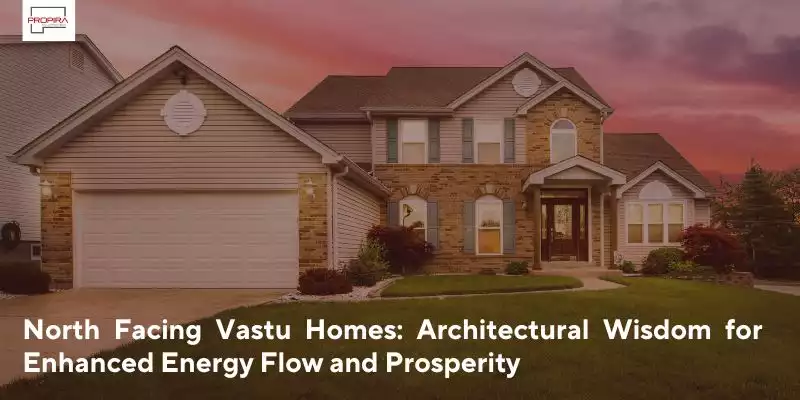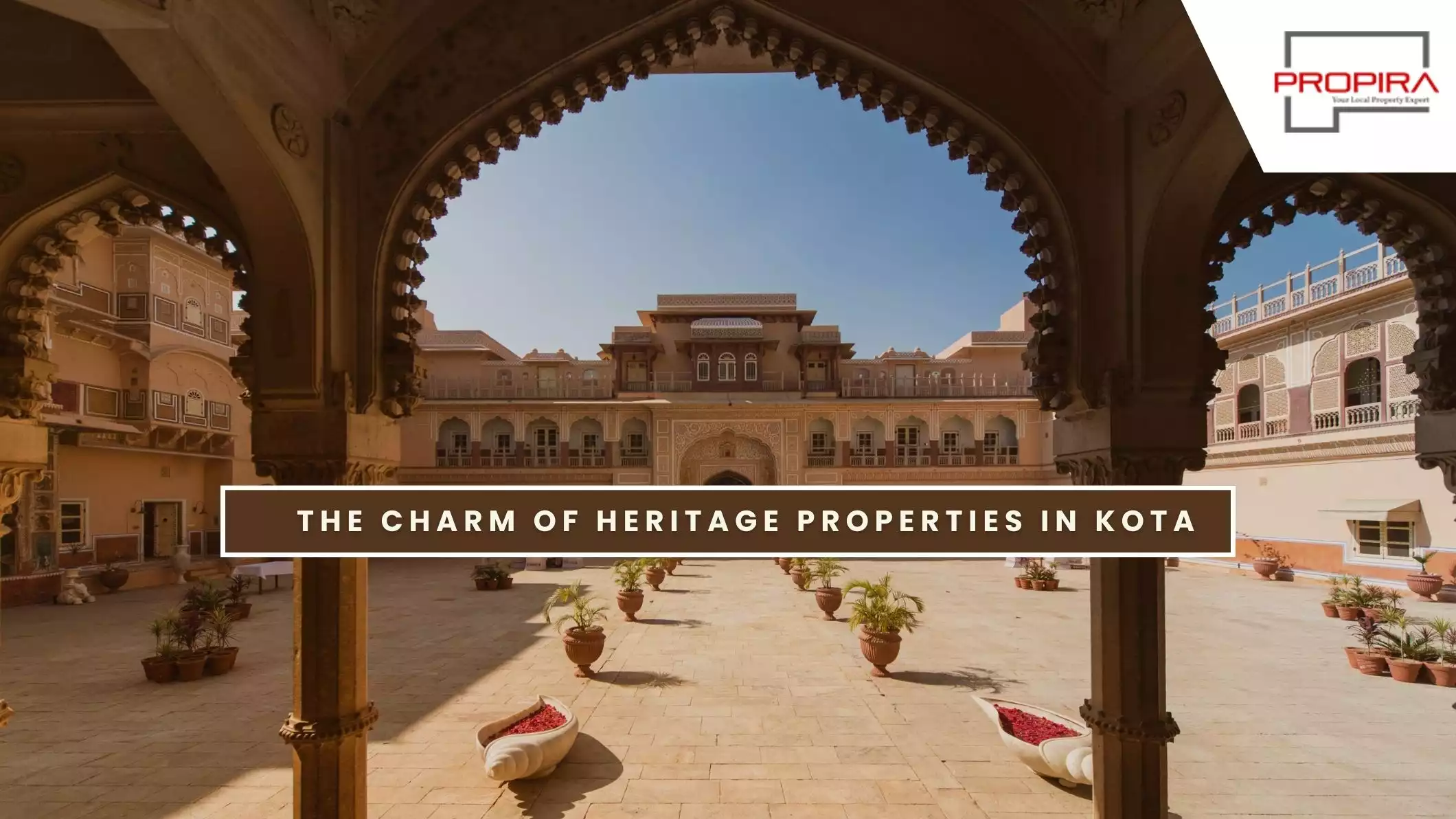
North Facing Vastu Homes: Architectural Wisdom for Enhanced Energy Flow and Prosperity
North Facing Vastu Homes: Architectural Wisdom for Enhanced Energy Flow and Prosperity

Introduction
In the realm of traditional Indian architecture, Vastu Shastra stands as a timeless doctrine, guiding the design and construction of buildings in harmony with the natural laws of the universe. This ancient science, deeply rooted in Hindu and Buddhist beliefs, offers more than just a set of architectural rules; it is a philosophy that interweaves cosmic principles, elemental forces, and directional alignments to create spaces that are not only aesthetically pleasing but also spiritually and energetically balanced.
The orientation of a home, according to Vastu Shastra, plays a pivotal role in ensuring the well-being and prosperity of its inhabitants. Among the various directional alignments, north-facing homes hold a special significance. In Vastu Shastra, the north direction is governed by the deity Kubera, the lord of wealth. It is believed that houses facing north attract positive energies, paving the way for abundance and prosperity.
This article delves into the architectural wisdom of North Facing Vastu Homes, aiming to elucidate how such alignments can enhance energy flow and foster prosperity. The principles of Vastu Shastra, when applied thoughtfully, can transform a living space from a mere structure of walls and roofs into a reservoir of positive energy and harmony.
The Essence of Vastu Shastra
At its core, Vastu Shastra is an art of balance. It focuses on aligning the five elements of nature—Earth, Water, Air, Fire, and Space—with the eight cardinal directions, each of which holds specific energies and attributes. The proper alignment according to these principles ensures a harmonious flow of cosmic energy (Prana) within the home, which is essential for the physical, mental, and spiritual well-being of the occupants.
Vastu Shastra is not just a set of rigid rules; it's a dynamic system that can be adapted to modern architectural practices. In contemporary times, where stress and environmental challenges are prevalent, Vastu offers a way to create living spaces that are not only environmentally sustainable but also nurturing for the mind and soul.
North-Facing Homes: A Vastu Perspective
North-facing homes are often sought after for their auspiciousness in Vastu Shastra. The north direction is associated with wealth, prosperity, and career growth. It is believed that the magnetic energies flowing from the north pole encourage positive vibrations in living spaces, thus attracting wealth and success.
The strategic placement of rooms, doors, windows, and even furniture in a north-facing home can significantly influence the energy flow. For instance, having the main entrance in the positive zones of the north ensures a smooth inflow of positive energies. Similarly, positioning living areas in the northeast can enhance familial bonding and spiritual growth.
Towards enhanced energy flow and prosperity
The focus of this article is to explore the architectural wisdom embedded in Vastu Shastra for north-facing homes. It aims to provide insights on how the principles of Vastu can be integrated into modern architectural designs to create homes that are not just physically appealing but also resonate with positive energies. By understanding and applying these principles, homeowners can transform their living spaces into sanctuaries of peace, prosperity, and wellbeing.
Understanding North-Facing Homes in Vastu Shastra
In the intricate tapestry of Vastu Shastra, the orientation of a home is not a mere architectural detail but a fundamental aspect that can influence the fortunes and well-being of its inhabitants. North-facing homes, in particular, are celebrated in Vastu Shastra for their unique characteristics and profound impact on energy flow. This section delves into the definition, significance, and mythological roots of north-facing homes as outlined in the Vastu Shastra.
Definition and Characteristics of a North-Facing House
A north-facing house, in Vastu terms, is one where the main entrance or door faces the north. This orientation is considered highly auspicious and is thought to bring a host of benefits to the residents. The characteristics of such homes go beyond mere directionality; they encompass the arrangement of rooms, the placement of windows and doors, and even the color schemes, all tuned to harness the positive energies emanating from the north.
In these homes, the placement of key areas such as the living room, kitchen, and bedrooms is carefully planned. For instance, having the master bedroom in the southwest and the kitchen in the southeast or northwest can optimize the flow of energy. Such meticulous planning ensures that every aspect of the house contributes to a harmonious and prosperous living environment.
The Significance of Direction in Vastu Shastra: Focus on the North
In Vastu Shastra, each direction is governed by specific elements and planetary influences, with the north being ruled by the water element and the planet Mercury. The north direction is synonymous with wealth, prosperity, and career progression. It is believed that houses facing north receive abundant blessings from Lord Kubera, the god of wealth in Hindu mythology.
The magnetic field of the earth also plays a crucial role. The earth's magnetic energy flows from the north to the south, and homes facing north are in a prime position to harness this energy. This alignment is believed to bring positive vibrations, enhancing the prosperity and health of the residents.
Mythological and Cultural Background of the North Direction in Vastu
The cultural and mythological significance of the north direction in Vastu Shastra is deeply embedded in Hindu and Buddhist traditions. According to Hindu mythology, the north is the direction of the divine. It is associated with the Himalayas, the abode of the gods, and is considered the direction of spiritual growth and enlightenment.
Buddhist texts also revere the north direction, associating it with stability, depth of character, and spiritual development. In these traditions, the north is often depicted as a source of divine energy and wisdom.
This mythological and cultural reverence for the north is not a mere coincidence but reflects an ancient understanding of cosmic and terrestrial energies. In Vastu Shastra, this understanding is translated into architectural principles, with north-facing homes designed to align with these powerful energies.
Architectural Guidelines for North-Facing Houses
Designing a north-facing house in accordance with Vastu Shastra is an exercise in creating a harmonious balance between the built environment and the natural energies of the universe. This section provides an insight into the principles of designing a north-facing house, focusing on key architectural elements and offering tips to optimize natural light and energy flow.
Principles of Designing a North-Facing House as Per Vastu
The design of a north-facing house in Vastu revolves around a few fundamental principles. The foremost is ensuring that the main entrance or door faces true north, as this is considered the most auspicious direction. The entrance should be free of obstacles and should open inward to invite positive energies.
The overall layout of the house should promote a smooth flow of energy. This involves thoughtful placement of rooms and open spaces. The central part of the house, known as the Brahmasthan, should ideally be kept open and free of heavy objects to allow an unrestricted flow of cosmic energy.
Key architectural elements
Entrance: The main entrance is a critical element in Vastu and should be placed in specific ‘positive’ zones of the north. It should be well-lit, inviting, and proportionate to the size of the house. Avoid placing any water-related elements, like fountains, near the entrance, as it can hinder the flow of positive energy.
Living Room:- Ideally situated in the northeast or northwest part of the house, the living room should be a space of light and airiness. Large windows in the north and east walls can help capture morning sunlight and enhance the flow of positive energy.
Kitchen: According to Vastu, the southeast corner is the ideal location for the kitchen, as it is governed by the element of fire. If this is not feasible, the northwest direction is the second-best option. The placement of the cooking range and sink should be done carefully to ensure there’s no clash of fire and water elements.
Bedroom: The master bedroom is best located in the southwest part of the house to ensure stability and grounding. Children’s rooms can be in the northwest or west. It is advisable to avoid bedrooms in the northeast, as this is considered the sacred space of the house.
Tips for Optimizing Natural Light and Energy Flow
Windows and Ventilation: North-facing houses should maximize the use of large windows on the north and east sides to bring in natural light and the morning sun. Good ventilation is crucial for maintaining the flow of Prana (life energy) throughout the house.
Color Scheme: Light and soothing colors are recommended for north-facing homes as they reflect light and create a sense of spaciousness. These colors are believed to enhance positive energy and create a calm and peaceful environment.
Landscaping: Plants and water bodies in the north or northeast of the property can boost positive energy. However, avoid large trees in the north, as they can block beneficial energies.
Enhancing energy flow and prosperity
The essence of Vastu Shastra is to harmonize the living space with the natural energies, thereby enhancing the flow of positive energy and prosperity. In the context of north-facing homes, specific Vastu tips and design strategies can be employed to maximize these benefits. This section delves into these strategies, the relationship between Vastu-compliant design and prosperity, and presents case studies of successful implementations.
Specific Vastu Tips for Enhancing Positive Energy in North-Facing Homes
Entrance Optimization: The entrance of a north-facing house should be in the positive zones of the north. It should be well-lit and free from obstructions to invite positive energy. Using auspicious symbols like Om, Swastika, or a picture of a deity near the entrance can amplify positivity.
Balancing the Five Elements: Ensure that the five elements (Earth, Water, Air, Fire, and Space) are balanced in the house layout. For instance, water elements like fountains or aquariums are favorable in the northeast, while fire elements like kitchens should be in the southeast.
Strategic Placement of Mirrors: Placing mirrors on the northern walls can effectively double the positive energy associated with wealth and prosperity. However, avoid mirrors facing the bed, as they can attract negative energies.
Use of Colors: Light and neutral colors are ideal for north-facing homes as they promote tranquility and positivity. Shades of green can be used to enhance the beneficial properties of the north direction.
Declutter and Maintain Open Spaces: A clutter-free home ensures a smooth flow of energy. Keeping the centre of the house (Brahmasthan) open and free of heavy furniture can significantly enhance energy circulation.
Relationship between Vastu-compliant Design and Prosperity
In Vastu Shastra, the alignment and design of a home are directly linked to the well-being and prosperity of its inhabitants. A Vastu-compliant north-facing home, with its optimal alignment with cosmic energies, is believed to attract wealth, health, and success. The strategic placement of different rooms and elements ensures that the positive energies are not just attracted but also retained within the home, fostering an environment of prosperity and growth.
Case Studies of Successful Vastu-Compliant North-Facing Homes
Residential Success in Bangalore:- A case study in Bangalore highlights a north-facing home where the occupants experienced a significant improvement in financial stability post-renovation as per Vastu guidelines. The key changes included repositioning the entrance and redesigning the living area to enhance the flow of positive energy.
Commercial Prosperity in Mumbai:- A business complex facing north was redesigned according to Vastu, resulting in a marked increase in foot traffic and business revenue. The entrance was optimized, and water elements were introduced in the northeast, leading to improved energy flow and prosperity.
Vastu Shastra and Modern Architecture
In the evolving landscape of modern architecture, the ancient wisdom of Vastu Shastra is experiencing a remarkable resurgence. Today's architects are increasingly integrating Vastu principles with contemporary design, creating spaces that resonate with traditional beliefs while embracing modern aesthetics. This fusion is not just about preserving old customs; it's about enhancing the quality of life by creating environments that are both aesthetically pleasing and energetically harmonious.
Integrating Vastu Principles with Contemporary Architectural Designs
Contemporary architecture, with its emphasis on minimalism and functionality, can seamlessly incorporate Vastu principles. For instance, a north-facing home can be designed with large, energy-efficient windows on the north and east sides to maximize natural light, a key tenet of Vastu. Modern materials and construction techniques also allow for the creation of open, airy spaces that Vastu recommends for the central part of the home.
Balancing Traditional Beliefs and Modern Aesthetics
The challenge lies in balancing the rigidity of Vastu’s directional rules with the fluidity of modern design. Architects are achieving this balance by focusing on the core essence of Vastu—harmonies with nature—and interpreting it in ways that suit modern lifestyles. For instance, using sustainable materials and green technologies not only aligns with Vastu’s emphasis on harmony with the Earth but also caters to contemporary concerns about environmental sustainability.
Technological Advancements Supporting Vastu-Compliant Construction
Technological advancements in architecture have opened up new avenues for Vastu-compliant construction. Computer-aided design (CAD) software allows architects to precisely align buildings with the cardinal directions as prescribed in Vastu. Smart home technologies can be used to control the home environment in ways that enhance the flow of positive energy, such as automating natural light levels and air quality.
Vastu Homes in Ajmer: A Focus on the Local Market
Ajmer, a city steeped in history and culture, is witnessing a growing interest in Vastu-compliant homes. The property market in Ajmer reflects a blend of traditional values and modern lifestyle aspirations, with Vastu-compliant properties increasingly in demand.
An Overview of the Property Market in Ajmer
Ajmer's real estate market is diverse, offering everything from traditional homes to modern apartments. The city's growth as a commercial and educational hub has attracted a populace that values both modern amenities and cultural traditions, including Vastu principles in home design.
Demand for Vastu-compliant homes in Ajmer
The demand for Vastu-compliant homes in Ajmer has surged in recent years. Buyers are seeking homes that not only meet their modern lifestyle needs but also adhere to Vastu principles, believing in the benefits of living in a space that is in harmony with cosmic energies.
Listing and Exploring Various Types of Properties Available in Ajmer
Ajmer offers a range of Vastu-compliant properties, from residential homes and apartments to commercial spaces. Residential properties often feature north-facing entrances, open central courtyards, and strategically placed living areas, kitchens, and bedrooms in alignment with Vastu principles. Commercial properties, too, are being designed with Vastu in mind, focusing on the orientation of the entrance and internal layout for positive energy flow.
Role of Property Dealers in Facilitating Vastu-Compliant Property Transactions
Property dealers in Ajmer play a crucial role in the real estate market, bridging the gap between traditional Vastu requirements and modern housing demands. They are increasingly knowledgeable about Vastu principles and guide buyers in choosing properties that comply with these ancient guidelines.
Challenges and Considerations
While the principles of Vastu Shastra offer numerous benefits, incorporating them into north-facing homes is not without challenges. Misconceptions, legal and regulatory considerations, and environmental concerns are some of the hurdles that need to be navigated.
Addressing Common Misconceptions and Challenges in Vastu for North-Facing Homes
One common misconception is that Vastu Shastra is rigid and incompatible with modern lifestyles. However, Vastu is actually quite flexible and can be adapted to contemporary needs. Another challenge is dealing with pre-existing structures that were not built according to Vastu principles. Retrofitting these buildings to comply with Vastu can be complex and sometimes impractical.
Legal and Regulatory Considerations in Construction as Per Vastu
Complying with Vastu Shastra in construction must also align with local building codes and regulations. This can be challenging, as Vastu principles might dictate certain orientations or layouts that conflict with these regulations. Collaboration between Vastu consultants, architects, and urban planners is essential to resolving these conflicts.
Environmental and Sustainability Aspects in Vastu-Compliant Architecture
Environmental sustainability is an increasing concern in construction. Fortunately, many Vastu principles align with sustainable practices, such as optimal use of natural light and ventilation. However, there can be challenges in integrating modern sustainable technologies with traditional Vastu designs, requiring innovative approaches and solutions.
Conclusion
Summarizing the Benefits of Following Vastu Shastra for North-Facing Homes
Vastu Shastra offers a unique approach to architecture that enhances the energy flow and prosperity of north-facing homes. By aligning the design with cosmic and terrestrial energies, Vastu brings harmony, health, and prosperity to the inhabitants.
Future Trends in Vastu-Compliant Residential and Commercial Properties
The future of Vastu-compliant properties looks promising, with an increasing number of people recognizing the benefits of living and working in spaces designed according to these ancient principles. The integration of Vastu with modern architectural trends and environmental sustainability is likely to continue evolving, offering the best of both worlds.
In conclusion, the harmonious blend of Vastu Shastra with modern architecture highlights the timeless relevance of this ancient wisdom. As the world progresses, the need for spaces that promote well-being, balance, and prosperity remains constant, making Vastu Shastra an invaluable guide in the journey towards creating holistic living environments.










Write Comment